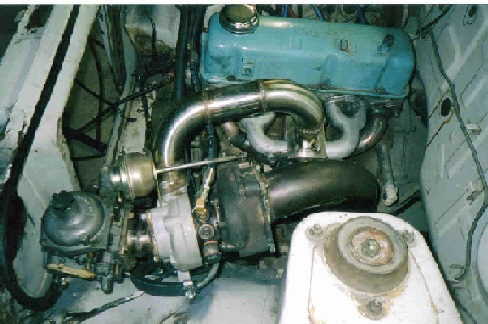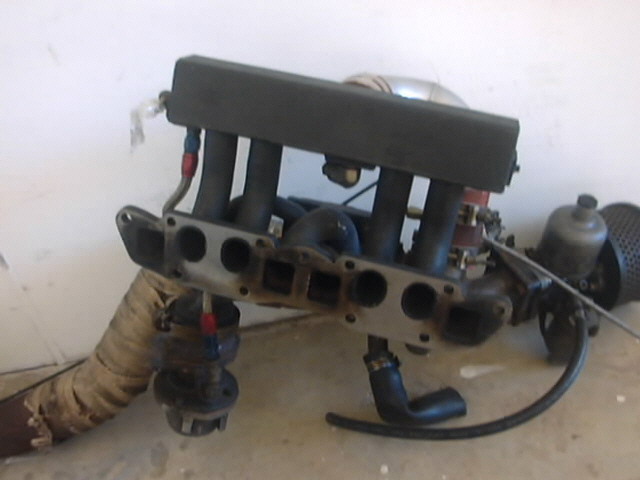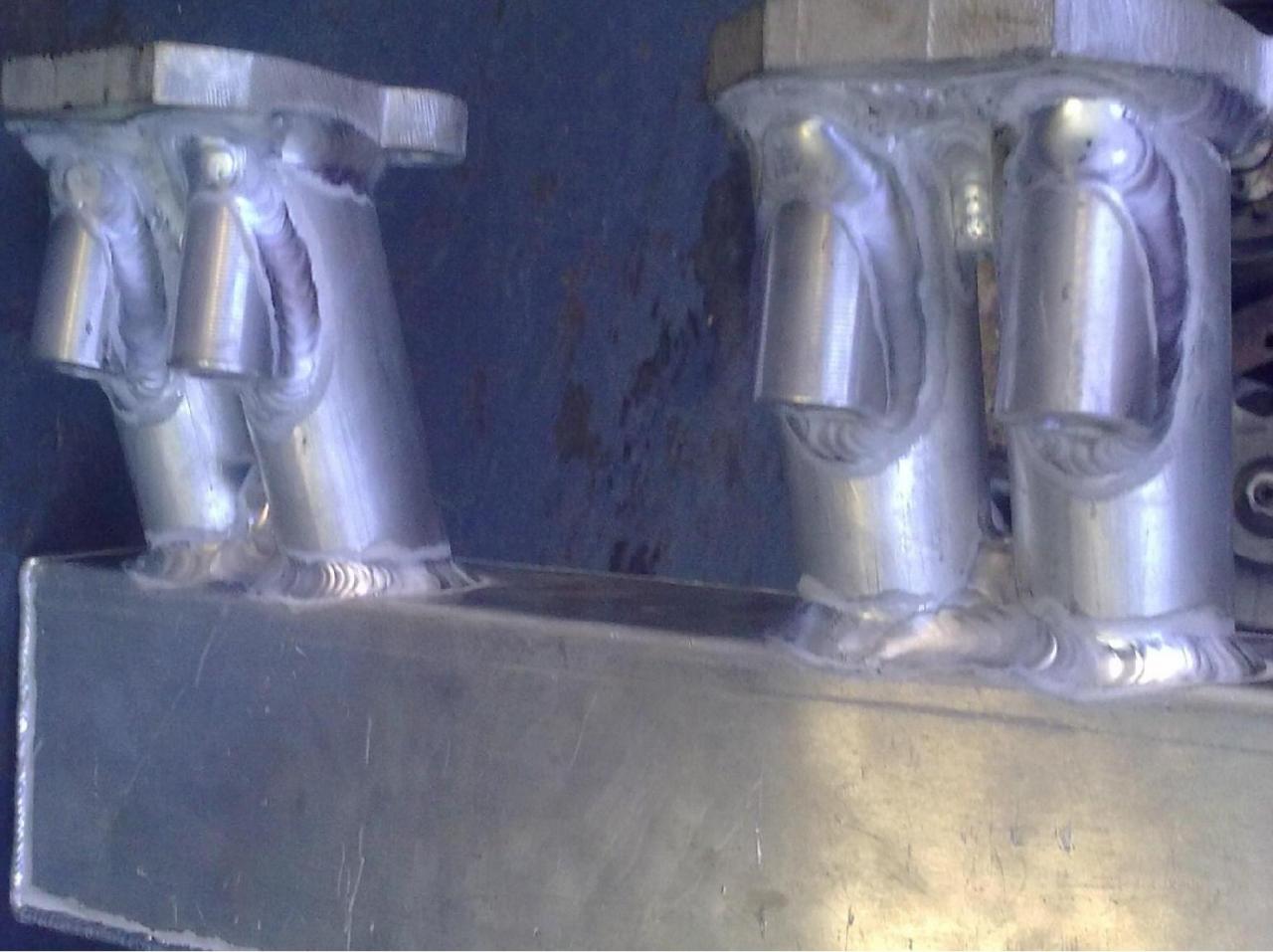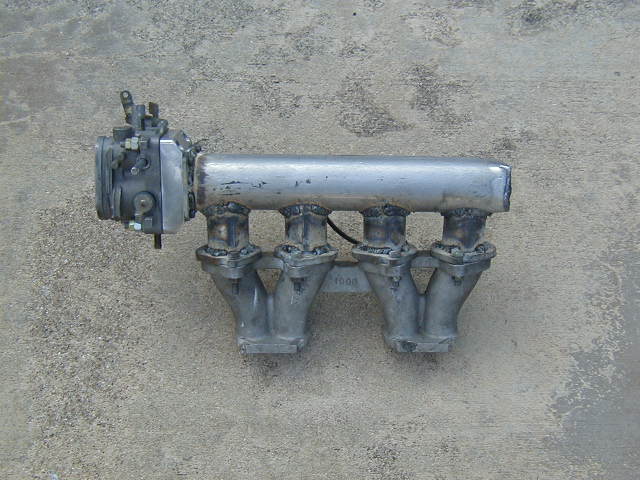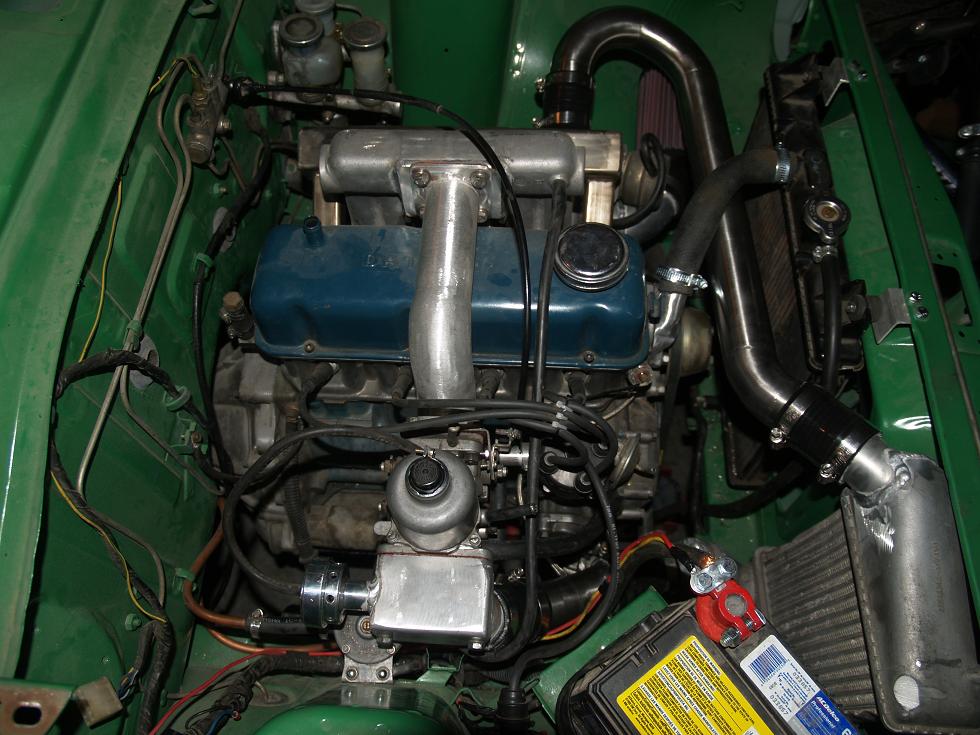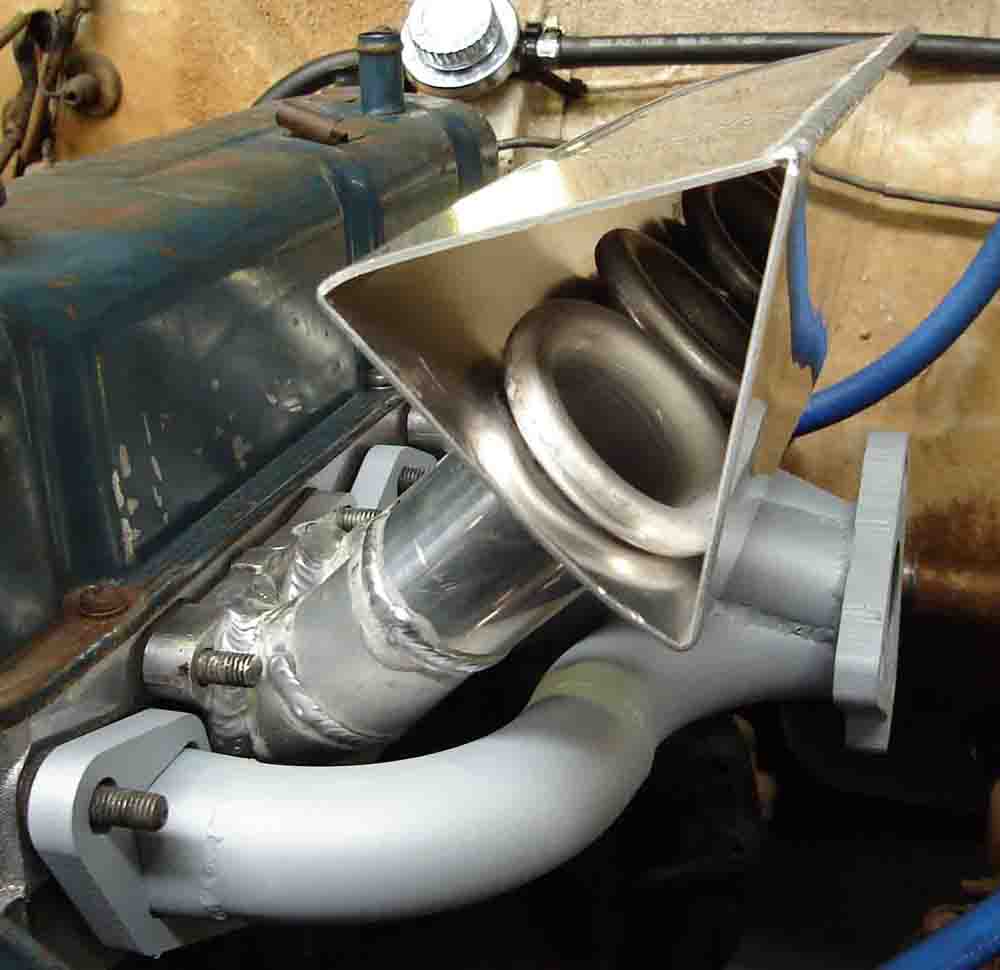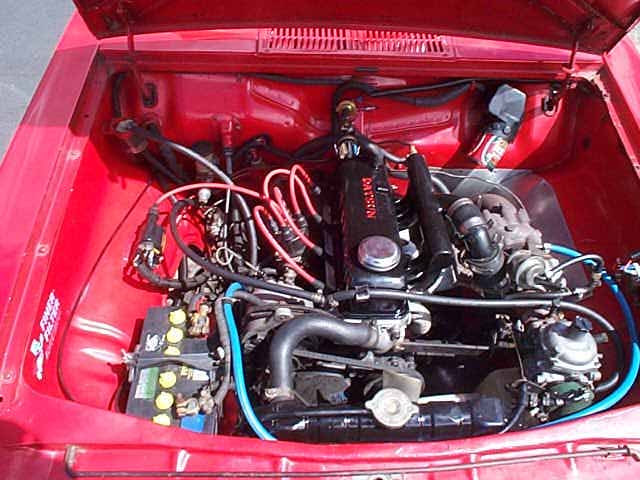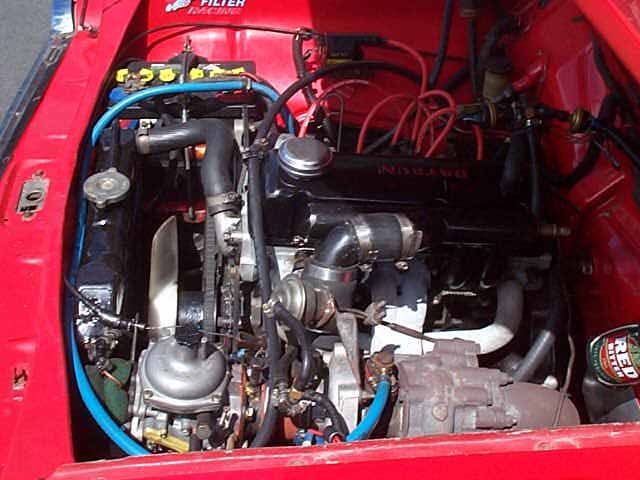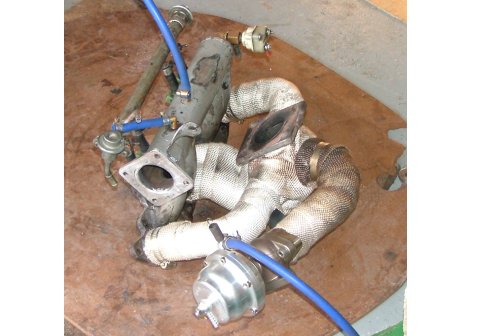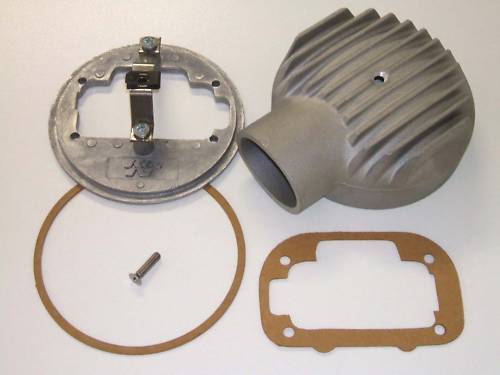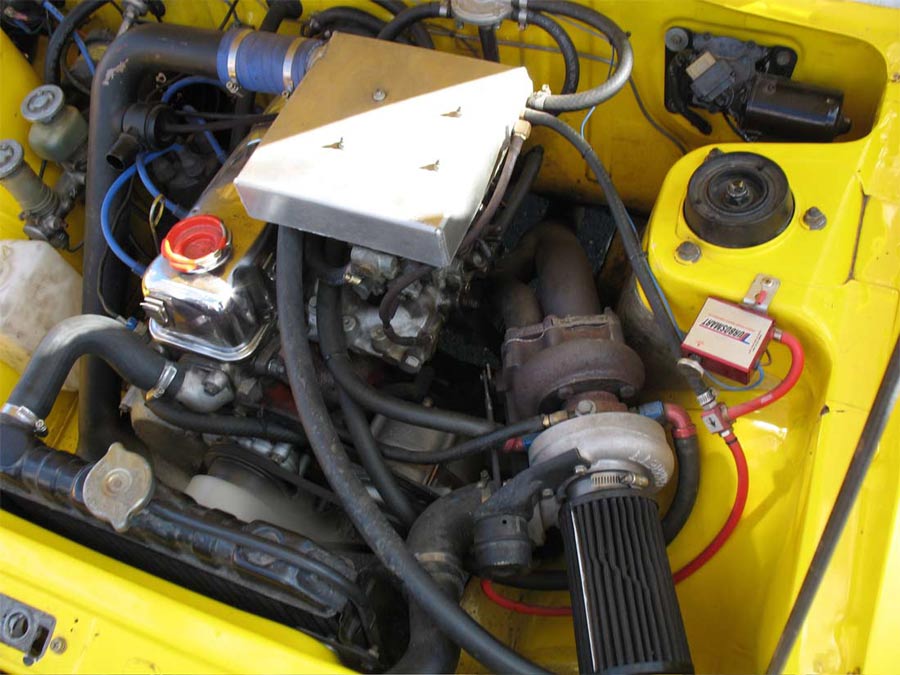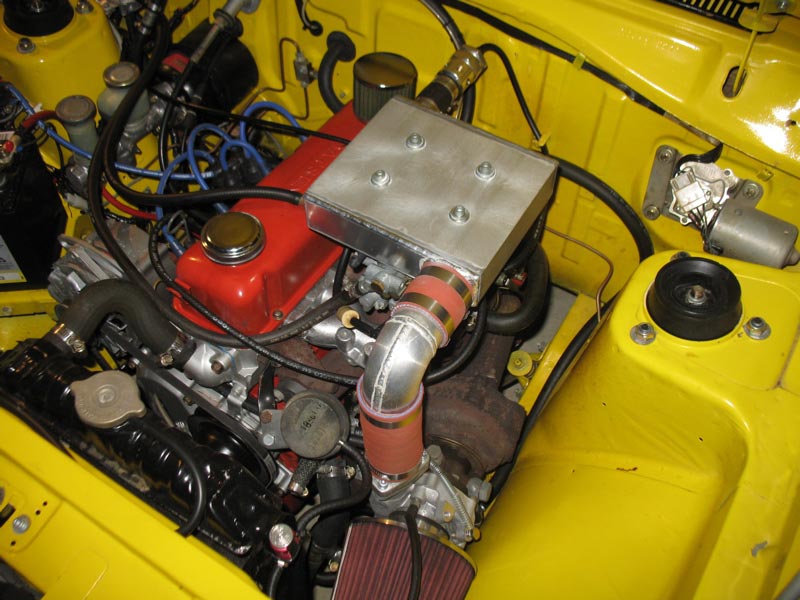Intake manifolds for a Turbo engine. For more airflow, a higher flowing carb, intake, heads (ports and valves) and exhaust system is beneficial. Supercharging will increase power on a stock engine, but increasing the airflow capability of the engine will bring your blown engine to its full potential.
Contents |
Overview
A15 Turbo using factory Twin Hitachi sidedraft manifold

#Top-hatted Carburetor on stock manifold
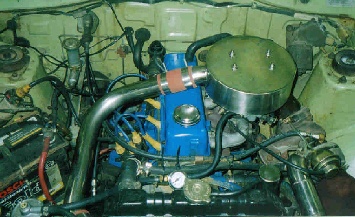
Stock Manifold
Blow-through or draw-through systems can use the stock Intake Manifold.
Blow-through with carburetor hat

Stock manifold with EFI throttle body
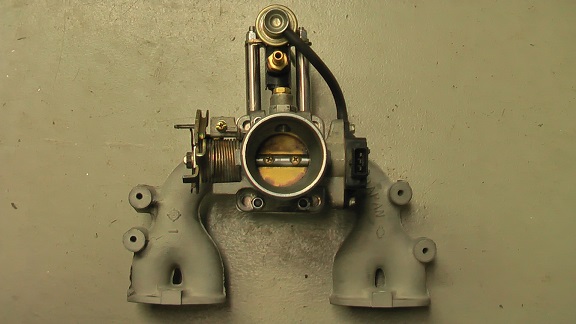
Stock Manifold cut and swapped sides
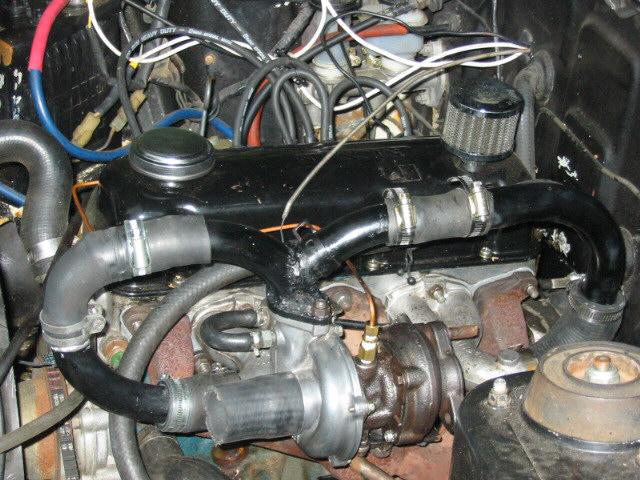
Log Manifolds
A log manifold is a cylindrical plenum type with individual runners to each cylinder. Log manifolds can either be fed by an EFI throttle body or by a sidedraft carburetor. They can be used with either blow-through or draw-through systems.
clyon's A-series Turbo Manifolds

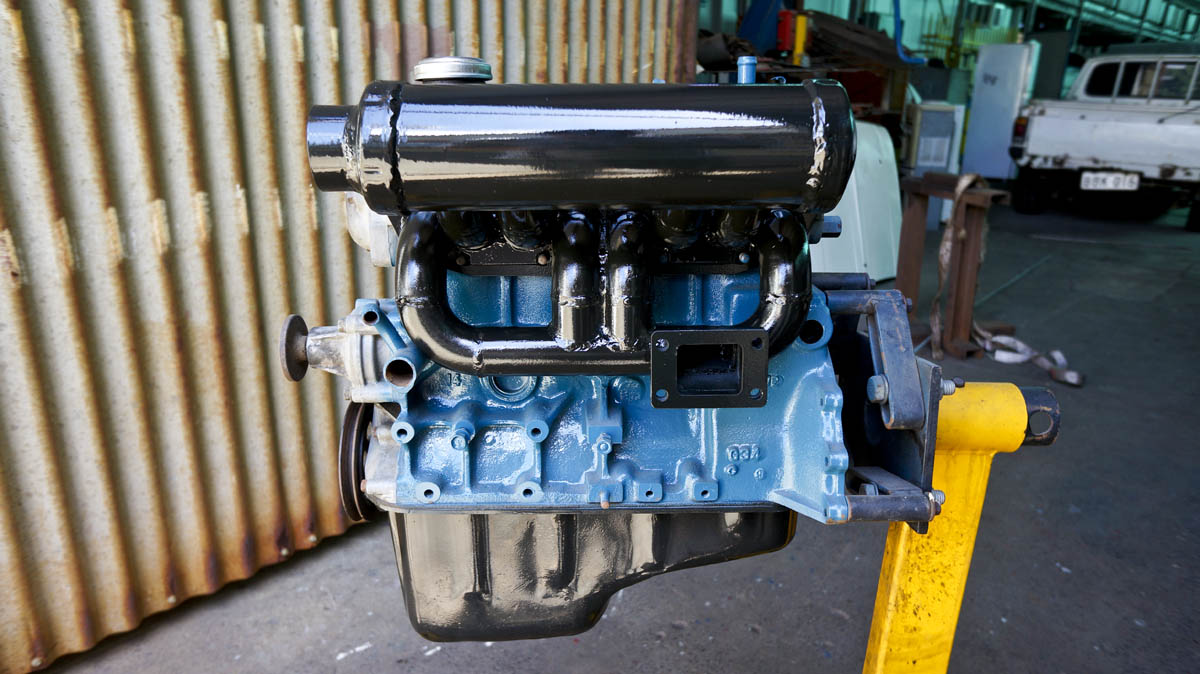
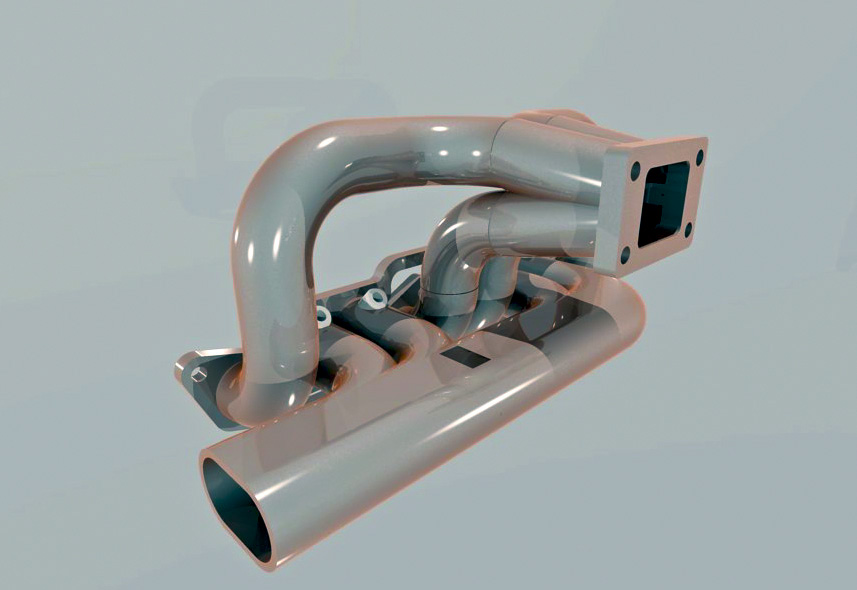
This kind of stock manifold-runner is limited in horsepower. The turbo can force more air through it (for more HP) but the air temp will escalate, limiting the power to be made.

Draw-through with very small plenum

Tuned Runner Length
For scavenge effect at 5000 RPM, the runners should be 20" long!
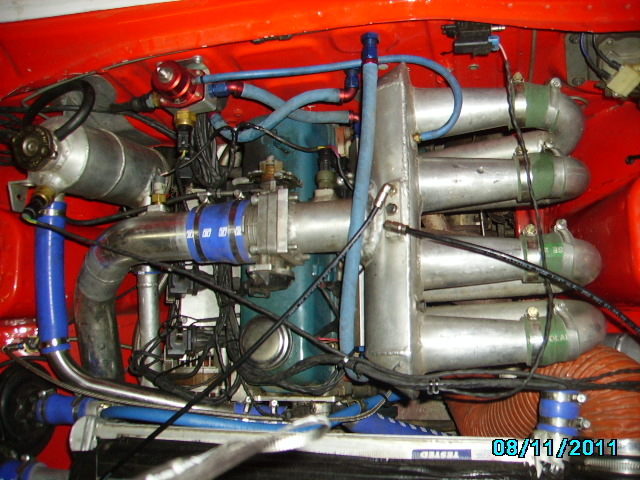
Top-hatted Carburetor
Feeding the carburetor via a top hat was a popular OEM method. phunkdotaspok say the stock Hitachi can handle 10 psi with a good top-gasket seal. In an NA application, a warped top is not a problem, as there is no pressure in the float chamber. This only becomes important in boosted application.
Blow-through system feeding carb top-hat

Weber 32/36 Carburetor with custom top hat


downdraft Dellorto carburetor on custom manifold

Boxed Carburetor
Blow through works well. The main reason to use this over a draw-through is so an intercooler can be used. The boxed carburetor can take more boost than the top-hatted carburetor.
Boxing the carb allows a more or less stock carb to be used, the outside pressure balancing the inside pressure. Special non-crushable fuel floats are needed.

![[Datsun 1200 encyclopedia]](/wiki/upload/wiki.png)





